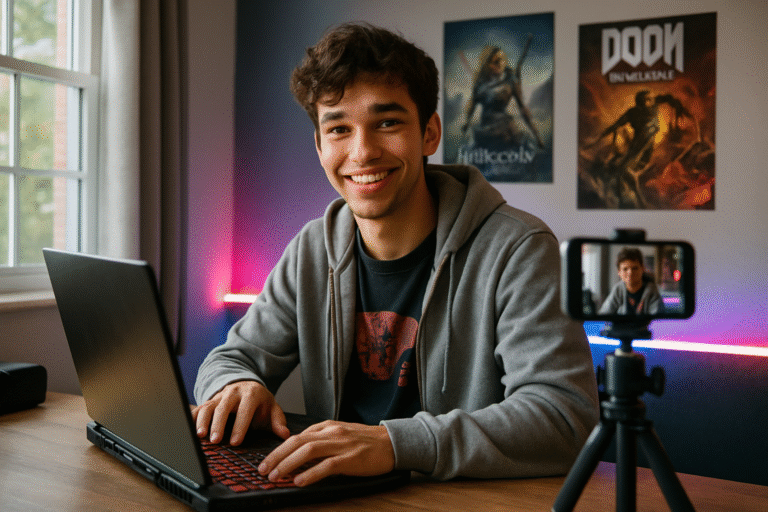Team Disquantified Explained The Smartest Way to Build Flexible Teams in 2025
Team disquantified means building a team based on what people can do, not based on job titles or ranks. With this idea, teams change as needed—using the right skills for each task. This article explains what team disquantified means, why it matters today, how it works, and why it can help people—especially kids like you—understand a smart way to team up.
What Does “Team Disquantified” Mean?
- “Disquantified” breaks down into dis‑ (removing) and quantified (measured by numbers).
- In a team disquantified setup, we take away strict job labels like “Manager” or “Designer.”
- Instead, everyone pitches in based on their skills—like drawing, writing, or building.
- If someone is great at drawing, they might handle that part.
- Another person good at organizing may lead the planning.
- That person might change the next time a different task needs to be done.
2. Why This Idea Matters Now
Two big changes in the world make team disquantified especially important today:
a) Remote & Hybrid Work
- Lots of people work from home or from different places.
- You can’t just walk to different teams easily.
- So teams need to be flexible and change fast.
- Team disquantified lets people join teams even if they’re not in the office.
b) Need for Agility
- Things change quickly in work and school projects.
- We need to adjust fast—like changing clothes in a hurry!
- A team disquantified can re‑form itself to match new needs.
What Are the Key Rules of Team Disquantified?
Here’s how it works in practice:
a) Forming Teams Based on Skills
- First, list out what each person is good at.
- Then pick everyone needed for a specific part of a project.
b) Flexibility in Roles
- Today, Maria does illustrations. Tomorrow, she might write.
- Jacob, who usually helps with computers, might lead the whole project.
c) Leaders Based on Abilities
- Leaders aren’t fixed.
- Whoever is best for the job leads that part.
d) Goals and Clear Tasks
- Each team needs a goal like “draw ten pictures” or “make a video.”
- Everyone knows what they need to do.
e) Mix of Data and Feelings
- You check progress by looking at numbers: how many pictures are done.
- But you also care about how people feel—are they having fun, learning?
Good Stuff About Team Disquantified
| Advantage | Why It Helps Everyone |
|---|---|
| Faster Decisions | Less waiting around means quicker results. |
| Better Use of Skills | Everyone does what they do best. |
| Happier Team Members | People get chances to learn and lead. |
| More Creativity | Mixing different skills sparks new ideas. |
| Less Boredom | No one is stuck in one role forever. |
What’s Tricky About It
- People might be confused about what they should do.
- Keeping track of who’s the leader or who did what can get messy.
- New members might take time to feel part of the team.
- Some bosses or schools prefer fixed roles.
Teams that try this need to talk a lot, plan well, and help people learn new ways.
How It Works for a School Project (Example)
Imagine a class activity to make a short play:
- List Skills
- Sara writes stories well.
- Ali draws posters.
- Fatima is good at speaking in front of people.
- Form the Team
- Sara writes dialogue.
- Ali draws posters and designs sets.
- Fatima rehearses lines and leads the show.
- Set the Goal
- Finish script in two days.
- Draw 5 posters.
- Practice and present.
- Track Progress
- Count how many posters done.
- Ask “Great job!” and talk about what’s going well.
- Shift Roles if Needed
- If Ali finishes early, they help Sara polish the script.
- If Sara is shy doing the show, Fatima could take a bigger lead.
- Wrap Up & Learn
- Talk about what went well and what can be better next time.
Where People Use This Idea
- Tech companies build new apps fast by picking the right people per task.
- Creative studios need writers, designers, and actors for different shows.
- Schools and clubs use it for project days, science fairs, and plays.
Even big businesses use similar ideas to stay quick and creative.
How To Start Doing This
- Know Everyone’s Skills
- Ask, “What are you good at?”
- Pick a project or goal to work on.
- Form your team based on what’s needed.
- Talk about what to do and who does what.
- Check in often to see how everyone feels.
- Switch roles or help out when someone finishes.
- Review and talk after finishing to see how to improve.
- Another Topic To Read:- myliberla.com Articles
Conclusion
Team disquantified is a smarter, faster, and friendlier way to work together. It’s like making a super-team that changes shape for each mission!
- It helps everyone use their best skills.
- It makes work fun and filled with new chances.
- It can be a bit tricky at first—but with good talking, planning, and help, it can work great.
Whether you’re in school, a club, or someday working on a big project, team disquantified is a cool way to bring out everyone’s best.


